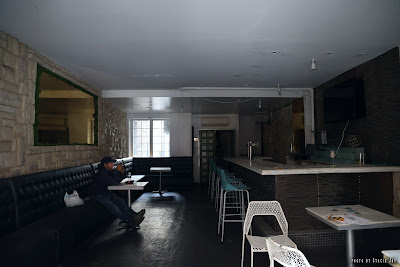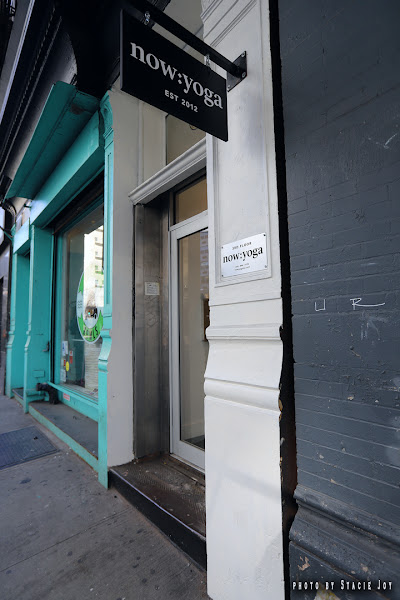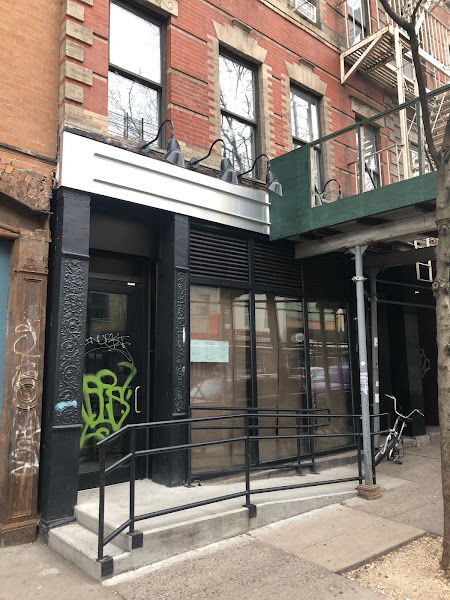Lyles & King showcases 12 explosively colorful paintings in its current solo show, “
Falling Through Flatland.” The gallery kindly facilitated an interview with myself and artist
Chris Hood, who answered a series of questions relating to his unique process, intentions for the show and overall painting practice.
How long did it take you to create the body of work exhibited in “Falling through Flatland?”
Though I work consistently most every day, the exhibitions tend to come together in moments of intense focus and creation. This body of work took around 5-6 months of painting time to create. It is both a culmination and lasering-in on efforts that span a few years.
Can you describe what your medium is and how you use it?
I use alkyd paint, which is not very common and quite difficult to work with. It is resin-based and therefore has a very organic and distinct materiality. Thick like honey in its natural state, but possible to thin and stain like watercolor. I came to this medium through my process of painting, which involves soaking through the fabric of the canvas with paint, as opposed to having it sit on the surface.
Can you elaborate on your painting process? Is it specific to “Falling through Flatland” or signature to your overall practice?
I build up layers of paint that push through the canvas from the back. It is a process that is unique but typical of all my work. The various strokes and washes prevent or collide with successive layers of paint enmeshing into the weft and producing a surface that appears literally from within the canvas. It can visually invoke sensations of memory and challenge what is in front and what is behind. It is a method that extends the paint and imagery into territories they would normally not tend to.
Of the show, what piece challenges you the most and why?
I hope to thread the viewer through variation and surprise within each piece and amongst the exhibition as a whole. This can be challenging enough for a viewer wanting a quick read. But one painting, in particular, All Futures (2021), is both visually distinct and acts as a kind of protagonist in the show at large. It presents a scrambled figure that seems to be either emerging or fading into a darkened space. Punctuated by flashes of light and black holes, the figure meets the viewer in between coming and going, like turning a corner on the street and running into someone you used to know.
Of the show, what piece do you feel most accomplished or satisfied in and why?
I am most satisfied with the paintings that are formally inventive and challenging. Some works cue your next steps, and you can see pathways open up. That is exciting.
Collecting imagery is clearly part of your process. How do you source it?
A landscape, for instance, might be depicted in three ways: sourced from a personal photograph, an appropriated digital landscape from a video game, and from a drawing or topographical rendering. I am interested in the vernacular narratives that come from these types of spaces, rather than the specific image itself, and aim to bring the subtle feelings of those spaces into the meaning of the work. There is often an art historical or traditional theme that I extend into contemporary and personal contexts. Everything is available.
At the opening, you spoke about how you operate mostly in an analog manner. If that is the case, how are you feeling about fine arts ascent into virtual spaces that are almost entirely hands-off?
Good art is transformative beyond the tools used to make it and I am mostly skeptical of virtual art for its reliance on staying within its algorithms. The hands-off nature of creating in virtual spaces eliminates most of the physical facilities for using a tool or rather misusing it (the once-radical developments in painting from brush to scraping, to pouring, to roller, to screenprint, etc.), and so the tool stays bound in its intention.
What is worse is the insistence of virtual art maintaining its ‘portrayal’ of art-ness. It is always the virtual thing as painting or as sculpture without speaking much to either direction. As always, the issue at hand is the soul.
You also mentioned to me at the opening of “Falling Through Flatland” that you were not a “conceptual painter.” What does that mean to you?
I was clarifying the importance of the subjective and individual experience. Although there are concepts that feed the work, how the painting exists as material in space is also important. Surprise and risk are crucial.
What are your upcoming plans for these paintings? Any shows on the horizon?
I plan to continue expanding this body of work for an upcoming Los Angeles art fair and Tokyo-based group show. I am also organizing several shows in Europe, which will take place later in the year.
“Falling through Flatland” will be on view at Lyles & King’s Catherine Street location through Feb. 5. Hours: Tuesday — Saturday: 11 a.m. to 6 p.m.
Top photo: Phantom Limb, 2021
Alkyd on canvas
Image Credit: Charles Benton
Below: Hypnotic Portrait 1, 2021
Alkyd on canvas
Image Credit: Charles Benton
All Futures, 2021
Alkyd on canvas
Image Credit: Charles Benton




























